Can People Get Fleas From Pets? Yes, they can, and PETS.EDU.VN is here to offer a comprehensive guide to understanding the risks, treatment options, and preventative measures. Learn how to protect yourself and your furry friends from these pesky parasites. Uncover expert tips on flea control and safeguard your family’s well-being with our actionable advice.
1. Understanding Fleas and Their Lifecycle
Fleas are tiny, wingless insects that survive as external parasites of mammals and birds. They’re notorious for their ability to jump great distances and their irritating bites. Understanding the flea lifecycle is crucial for effective flea control, as treating only the adult fleas will not eliminate the infestation.
1.1. The Flea Lifecycle Stages
Fleas go through four distinct stages: egg, larva, pupa, and adult.
- Eggs: Female fleas lay eggs on the host (your pet), but these eggs often fall off into the environment, such as carpets, bedding, and furniture.
- Larvae: The eggs hatch into larvae, which feed on organic debris, including adult flea feces (flea dirt).
- Pupae: The larvae then develop into pupae, encased in a protective cocoon. This stage can last for several weeks or even months, as the pupae are resistant to many environmental factors and insecticides.
- Adults: Finally, the adult fleas emerge from the cocoon, ready to feed on a host and reproduce.
1.2. Common Flea Species Affecting Pets and Humans
The most common flea species affecting pets and humans is the cat flea (Ctenocephalides felis), despite its name, it commonly infests both cats and dogs. Other flea species include the dog flea (Ctenocephalides canis) and the human flea (Pulex irritans), though these are less common in domestic environments.
1.3. How Fleas Find and Infest Hosts
Fleas are attracted to hosts by body heat, movement, carbon dioxide, and vibrations. They use their powerful legs to jump onto passing animals or humans. Once on a host, they feed on blood, causing irritation and discomfort. A female flea can lay up to 50 eggs per day, quickly leading to a full-blown infestation if left unchecked.
2. Can Fleas Live on Humans?
While fleas prefer furry hosts like cats and dogs, they can and do bite humans. However, they do not typically live on humans long-term due to the lack of fur for hiding and breeding.
2.1. Why Fleas Prefer Pets Over Humans
Fleas prefer pets because their fur provides an ideal environment for hiding, breeding, and laying eggs. Pets also have a higher body temperature, which attracts fleas.
2.2. How Fleas End Up on Humans
Fleas can jump onto humans from infested pets, carpets, furniture, or yards. They are most likely to bite areas of the body that are easily accessible, such as ankles, legs, and arms.
2.3. The Difference Between Flea Bites on Pets and Humans
Flea bites on pets often result in intense itching, scratching, and potential skin infections. In humans, flea bites typically cause small, raised, itchy bumps, often in clusters. These bites can be quite irritating, but they rarely transmit diseases.
3. Identifying Flea Bites on Humans
Recognizing flea bites is the first step in addressing the problem and finding relief. Here’s what to look for:
3.1. Characteristics of Flea Bites
- Small, raised bumps
- Redness around the bite
- Intense itching
- Often appear in clusters or lines
- Commonly found on ankles, legs, and arms
3.2. Common Locations for Flea Bites on the Body
Flea bites are most commonly found on the lower legs and ankles, but can also appear on the arms, waist, and other areas where clothing fits tightly against the skin.
3.3. Differentiating Flea Bites From Other Insect Bites
Flea bites can be distinguished from other insect bites by their small size, intense itchiness, and tendency to appear in clusters. Mosquito bites, for example, are usually larger and cause more swelling. Bedbug bites often appear in a line or zigzag pattern.
4. Health Risks Associated With Flea Bites on Humans
While flea bites are generally more of a nuisance than a serious health threat, they can pose some risks:
4.1. Allergic Reactions to Flea Bites
Some people are allergic to flea saliva, which can cause a more severe reaction, including hives, rash, and difficulty breathing. If you experience these symptoms, seek medical attention immediately.
4.2. Diseases Transmitted by Fleas (Rare)
In rare cases, fleas can transmit diseases to humans, such as:
- Murine typhus: A bacterial disease that causes fever, headache, and rash.
- Tapeworms: Fleas can carry tapeworm larvae, which can be ingested if a person accidentally swallows an infected flea.
- Cat Scratch Disease: Although primarily transmitted by cats, fleas can play a role in spreading the bacteria that causes this disease.
4.3. Secondary Infections From Scratching
Excessive scratching of flea bites can break the skin and lead to secondary bacterial infections, such as impetigo or cellulitis.
5. Treating Flea Bites on Humans
Treating flea bites focuses on relieving the itch and preventing infection:
5.1. Home Remedies for Flea Bite Relief
- Wash the area: Gently wash the bites with soap and water to prevent infection.
- Apply a cold compress: A cold compress can help reduce swelling and itching.
- Use anti-itch creams: Over-the-counter anti-itch creams containing hydrocortisone or calamine lotion can provide relief.
- Take antihistamines: Oral antihistamines can help reduce itching and allergic reactions.
5.2. Over-the-Counter Treatments
- Hydrocortisone cream: Reduces inflammation and itching.
- Calamine lotion: Soothes and protects the skin.
- Antihistamine creams: Provide localized relief from itching.
5.3. When to Seek Medical Attention
Seek medical attention if you experience any of the following:
- Severe allergic reaction
- Signs of infection (increased pain, swelling, redness, pus)
- Flu-like symptoms (fever, headache, muscle aches)
6. Preventing Fleas on Pets
Preventing fleas on your pets is the most effective way to protect yourself and your family from flea bites.
6.1. Year-Round Flea Prevention
Fleas can be a problem year-round, especially in warmer climates. Consult with your veterinarian about the best flea prevention products for your pet.
6.2. Types of Flea Preventative Medications
- Topical treatments: Applied to the skin, these treatments kill fleas on contact.
- Oral medications: Given by mouth, these medications work systemically to kill fleas.
- Flea collars: Release medication over time to prevent fleas.
6.3. Choosing the Right Flea Prevention Product for Your Pet
Consider your pet’s species, breed, age, health, and lifestyle when choosing a flea prevention product. Always follow your veterinarian’s recommendations.
| Flea Treatment Type | Pros | Cons | Considerations |
|---|---|---|---|
| Topical | Easy to apply, effective for a month | Can cause skin irritation, may wash off | Ideal for pets that tolerate topical application and don’t swim frequently. |
| Oral | Convenient, effective, no mess | Some pets may not like taking pills, potential side effects | Suitable for pets that readily take medication. |
| Flea Collars | Long-lasting protection (several months), cost-effective | Can cause skin irritation around the collar, not suitable for all pets | Best for pets that tolerate collars and require long-term protection. |
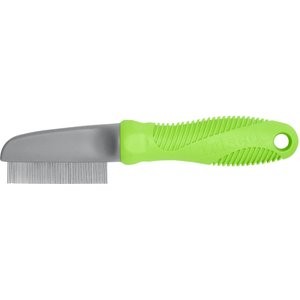
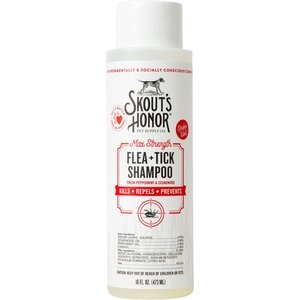
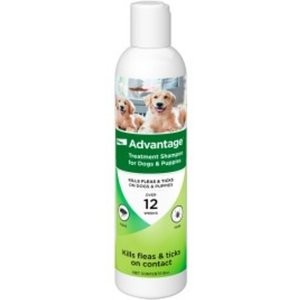
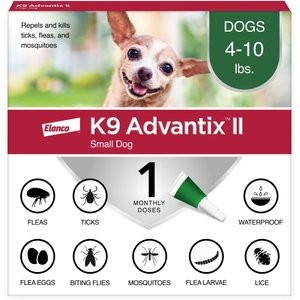
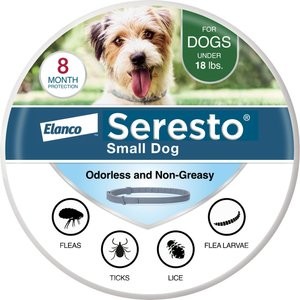

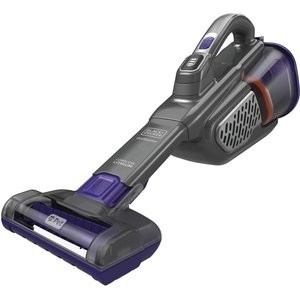
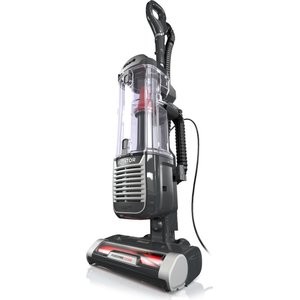
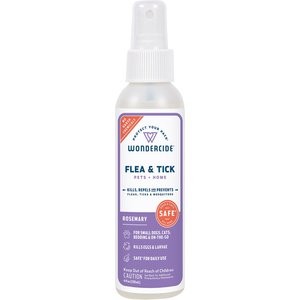
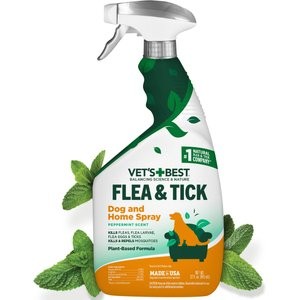
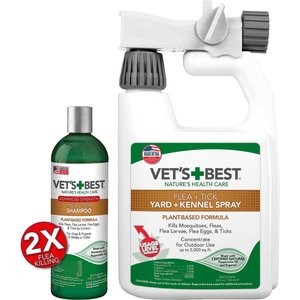
7. Getting Rid of Fleas in Your Home
If fleas have already made their way into your home, you’ll need to take steps to eliminate them.
7.1. Vacuuming and Cleaning
- Vacuum thoroughly: Vacuum all carpets, rugs, furniture, and floors regularly.
- Wash bedding: Wash all pet bedding and human bedding in hot water.
- Steam clean: Steam clean carpets and upholstery to kill fleas and eggs.
7.2. Insecticides and Sprays
- Use appropriate products: Choose insecticides and sprays specifically designed for flea control.
- Follow instructions: Always follow the manufacturer’s instructions carefully.
- Target problem areas: Focus on areas where pets spend time, such as carpets, bedding, and furniture.
7.3. Natural Flea Control Methods
- Diatomaceous earth: A natural powder that kills fleas by dehydrating them.
- Essential oils: Some essential oils, such as lavender and cedarwood, can repel fleas.
- Flea traps: Sticky traps can capture adult fleas.
8. Preventing Fleas in Your Yard
Controlling fleas in your yard is an important part of overall flea prevention.
8.1. Yard Maintenance
- Mow regularly: Keep your lawn mowed to reduce flea habitat.
- Remove debris: Clear away leaves, grass clippings, and other debris where fleas can hide.
- Trim shrubs: Trim shrubs and bushes to increase sunlight and reduce humidity.
8.2. Outdoor Flea Sprays
- Choose appropriate products: Select flea sprays specifically designed for outdoor use.
- Target problem areas: Focus on shaded areas, under decks, and near pet resting spots.
- Follow instructions: Always follow the manufacturer’s instructions carefully.
8.3. Natural Yard Treatments
- Nematodes: Beneficial nematodes are microscopic worms that feed on flea larvae in the soil.
- Diatomaceous earth: Can be sprinkled in the yard to kill fleas.
- Cedar chips: Can be used as mulch to repel fleas.
9. Special Considerations for Different Types of Pets
Different pets may require different approaches to flea prevention and treatment.
9.1. Flea Control for Dogs
- Consult your vet: Work with your veterinarian to choose the best flea prevention product for your dog.
- Regular grooming: Brush your dog regularly to check for fleas and remove flea dirt.
- Flea baths: Use flea shampoo as needed to kill adult fleas.
9.2. Flea Control for Cats
- Use cat-safe products: Only use flea prevention products specifically designed for cats.
- Avoid permethrin: Permethrin is toxic to cats and should be avoided.
- Indoor cats: Even indoor cats need flea prevention, as fleas can be brought into the home on clothing or other pets.
9.3. Flea Control for Small Animals (Rabbits, Guinea Pigs, etc.)
- Consult your vet: Small animals are more sensitive to flea treatments, so consult with your veterinarian before using any products.
- Gentle treatments: Use gentle, pet-safe flea treatments, such as flea combs and mild flea shampoos.
- Regular cleaning: Keep their living areas clean and dry to prevent flea infestations.
10. Addressing Common Misconceptions About Fleas
There are many myths and misconceptions about fleas. Let’s debunk some of the most common ones.
10.1. Myth: Fleas Only Live on Animals
While fleas prefer animals, they can survive in the environment and jump onto humans for a blood meal.
10.2. Myth: Indoor Pets Don’t Need Flea Prevention
Fleas can be brought into the home on clothing, shoes, or other pets, so even indoor pets need flea prevention.
10.3. Myth: Fleas Are Only a Problem in the Summer
Fleas can be a problem year-round, especially in warmer climates or in homes with central heating.
11. The Importance of a Proactive Approach to Flea Control
Taking a proactive approach to flea control is essential for protecting your pets, your family, and your home.
11.1. Benefits of Consistent Flea Prevention
- Protects your pets from discomfort and health problems.
- Prevents flea infestations in your home.
- Reduces the risk of flea bites on humans.
- Saves time and money in the long run.
11.2. Creating a Flea Control Plan
- Assess your risk: Consider your pet’s lifestyle, your geographic location, and your home environment.
- Consult your vet: Work with your veterinarian to develop a flea control plan that is tailored to your pet’s needs.
- Be consistent: Follow your flea control plan consistently to prevent infestations.
11.3. Monitoring for Fleas
- Regularly check your pets for fleas.
- Look for flea dirt in their fur.
- Monitor your home for signs of fleas.
12. Flea Control Products: A Detailed Comparison
Choosing the right flea control products can be overwhelming. Here’s a detailed comparison to help you make an informed decision:
| Product Type | Active Ingredient(s) | Application Method | Pros | Cons | Safety Considerations |
|---|---|---|---|---|---|
| Topical Treatments | Fipronil, Imidacloprid | Spot-on | Easy to apply, effective, long-lasting | Can cause skin irritation, may not be suitable for pets with sensitive skin | Follow application instructions carefully, keep away from children and other pets until dry |
| Oral Medications | Nitenpyram, Spinosad | Tablet | Convenient, fast-acting, no residue | Some pets may resist taking pills, potential side effects (vomiting, diarrhea) | Consult with your vet before use, monitor for adverse reactions |
| Flea Collars | Flumethrin, Imidacloprid | Collar | Long-lasting, continuous protection, cost-effective | Can cause skin irritation around the collar, may not be suitable for pets that chew on collars | Check collar fit regularly, remove if irritation occurs, keep away from children |
| Flea Shampoos | Pyrethrins, Permethrin | Bath | Kills fleas on contact, provides immediate relief | Short-term protection, can be drying to the skin, some ingredients are toxic to cats | Use as directed, avoid contact with eyes, rinse thoroughly, do not use permethrin on cats |
| Environmental Sprays | Permethrin, Pyriproxyfen | Spray | Effective for treating large areas, kills fleas and prevents egg hatching | Can be harmful to pets and humans if not used properly, requires careful application | Remove pets and children during application, ventilate the area thoroughly, follow safety precautions listed on the label |
| Natural Remedies | Diatomaceous Earth, Essential Oils | Various | Non-toxic, environmentally friendly, may repel fleas | Less effective than chemical treatments, requires frequent application | Use food-grade diatomaceous earth, dilute essential oils properly, test on a small area first |
13. Advanced Flea Control Strategies
For severe or persistent flea infestations, you may need to employ more advanced strategies.
13.1. Working With a Pest Control Professional
A pest control professional can provide expert advice and treatment options for severe flea infestations.
13.2. Integrated Pest Management (IPM)
IPM is a comprehensive approach to pest control that combines multiple strategies, including:
- Prevention
- Monitoring
- Cultural practices
- Biological control
- Chemical control
13.3. Dealing With Flea Resistance
Fleas can develop resistance to certain insecticides over time. If you suspect flea resistance, consult with your veterinarian or a pest control professional for alternative treatment options.
14. The Role of Diet and Nutrition in Flea Prevention
A healthy diet can strengthen your pet’s immune system and make them less attractive to fleas.
14.1. Foods That Boost Your Pet’s Immune System
- Omega-3 fatty acids: Found in fish oil and flaxseed, omega-3 fatty acids can improve skin health and reduce inflammation.
- Antioxidants: Found in fruits and vegetables, antioxidants can protect against cell damage and boost the immune system.
- Probiotics: Found in yogurt and kefir, probiotics can improve gut health and strengthen the immune system.
14.2. Hydration and Flea Prevention
Adequate hydration is essential for overall health and can help improve skin health, making your pet less attractive to fleas.
14.3. Avoiding Allergenic Foods
Food allergies can weaken your pet’s immune system and make them more susceptible to flea infestations. Avoid common allergens, such as corn, wheat, and soy.
15. Debunking DIY Flea Control Myths
While DIY flea control methods can be appealing, many are ineffective or even harmful. Let’s debunk some common myths:
15.1. Myth: Garlic Repels Fleas
There is no scientific evidence to support the claim that garlic repels fleas. In fact, garlic can be toxic to pets in large quantities.
15.2. Myth: Brewer’s Yeast Repels Fleas
While brewer’s yeast is a good source of B vitamins, there is no evidence that it repels fleas.
15.3. Myth: Pennyroyal Oil Repels Fleas
Pennyroyal oil is toxic to pets and should never be used as a flea repellent.
16. Flea Control in Multi-Pet Households
Flea control can be more challenging in households with multiple pets.
16.1. Treating All Pets Simultaneously
Treat all pets in the household simultaneously to prevent fleas from jumping from one pet to another.
16.2. Preventing Cross-Contamination
- Wash bedding separately: Wash pet bedding separately to prevent cross-contamination.
- Vacuum frequently: Vacuum all areas where pets spend time to remove fleas and eggs.
- Isolate infested pets: If possible, isolate infested pets until the infestation is under control.
16.3. Individualized Treatment Plans
Each pet may require a different flea control plan based on their species, breed, age, health, and lifestyle.
17. Legal and Ethical Considerations in Flea Control
When using flea control products, it’s important to consider the legal and ethical implications.
17.1. Responsible Use of Insecticides
- Follow instructions carefully: Always follow the manufacturer’s instructions when using insecticides.
- Use appropriate products: Choose insecticides that are specifically designed for the intended use.
- Store safely: Store insecticides safely out of reach of children and pets.
17.2. Avoiding Harm to Non-Target Species
Some insecticides can harm non-target species, such as bees and other beneficial insects. Use insecticides selectively and avoid spraying flowering plants.
17.3. Animal Welfare Considerations
Ensure that flea control methods are humane and do not cause unnecessary suffering to animals.
18. The Future of Flea Control
Flea control is an evolving field, with new products and strategies being developed all the time.
18.1. Emerging Technologies
- RNA interference (RNAi): A technology that can target specific genes in fleas, disrupting their development and reproduction.
- New insecticides: New insecticides with improved safety profiles and efficacy are being developed.
- Vaccines: Vaccines that can protect pets from fleas are being researched.
18.2. Sustainable Flea Control
Sustainable flea control methods focus on minimizing the use of chemical insecticides and promoting environmentally friendly practices.
18.3. Personalized Flea Control
Personalized flea control plans that are tailored to the individual needs of each pet and household are becoming increasingly common.
19. Real-Life Flea Control Success Stories
Hearing about real-life success stories can provide inspiration and motivation.
19.1. Case Study 1: Eliminating a Severe Flea Infestation
A family with multiple pets had a severe flea infestation that they couldn’t control with over-the-counter products. They hired a pest control professional who used a combination of insecticides, vacuuming, and steam cleaning to eliminate the infestation.
19.2. Case Study 2: Preventing Fleas in a High-Risk Area
A pet owner living in a high-risk area for fleas used a combination of topical flea prevention, regular grooming, and yard maintenance to prevent flea infestations.
19.3. Case Study 3: Natural Flea Control Success
A pet owner who preferred natural methods used a combination of diatomaceous earth, essential oils, and regular cleaning to control fleas.
20. Conclusion: Taking Control of Fleas
Fleas can be a frustrating and persistent problem, but with the right knowledge and strategies, you can take control and protect your pets, your family, and your home.
20.1. Recap of Key Points
- Understand the flea lifecycle.
- Prevent fleas on your pets with year-round flea prevention.
- Get rid of fleas in your home and yard.
- Address common misconceptions about fleas.
- Take a proactive approach to flea control.
20.2. Encouragement to Take Action
Don’t let fleas take over your life. Take action today to protect your pets and your family.
20.3. Call to Action: Visit PETS.EDU.VN for More Information
For more information about flea control and other pet care topics, visit PETS.EDU.VN. We are your trusted source for expert advice and high-quality products.
Is your furry friend constantly scratching, and you suspect fleas are the culprit? Are you finding itchy bites on your own ankles? Don’t let these pesky parasites ruin your peace of mind. Head over to PETS.EDU.VN for in-depth articles, product reviews, and personalized advice to tackle flea infestations effectively.
At PETS.EDU.VN, we understand the challenges of pet ownership. Flea control can be daunting, but with our expert guidance, you can create a flea-free environment for your entire family. From choosing the right preventative medications to implementing effective home remedies, we’ve got you covered.
Ready to take the first step towards a happier, healthier, and flea-free home? Visit PETS.EDU.VN today and discover a wealth of resources to help you conquer flea infestations once and for all. Your pets and your family will thank you.
Contact us:
Address: 789 Paw Lane, Petville, CA 91234, United States
Whatsapp: +1 555-987-6543
Website: pets.edu.vn
FAQ: Can People Get Fleas From Pets?
1. Can I get fleas from my pet?
Yes, you can get fleas from your pet. Fleas can jump from infested pets onto humans, especially if the pet spends time indoors.
2. Do fleas live on humans?
While fleas can bite humans, they do not typically live on humans long-term due to the lack of fur for hiding and breeding.
3. What do flea bites look like on humans?
Flea bites on humans are typically small, raised, red bumps that are very itchy. They often appear in clusters or lines, commonly on the ankles, legs, and arms.
4. How do I treat flea bites on myself?
To treat flea bites, wash the area with soap and water, apply a cold compress, use over-the-counter anti-itch creams (such as hydrocortisone or calamine lotion), and take oral antihistamines to relieve itching.
5. Can fleas transmit diseases to humans?
In rare cases, fleas can transmit diseases to humans, such as murine typhus, tapeworms, and cat scratch disease.
6. What is the best way to prevent fleas on my pet?
The best way to prevent fleas on your pet is to use year-round flea preventative medications recommended by your veterinarian.
7. How do I get rid of fleas in my home?
To get rid of fleas in your home, vacuum thoroughly and regularly, wash all bedding in hot water, use insecticides and sprays designed for flea control, and consider natural flea control methods such as diatomaceous earth.
8. What are some natural flea control methods I can use?
Natural flea control methods include using diatomaceous earth, essential oils (such as lavender and cedarwood), and flea traps.
9. Can I use the same flea treatment for my dog and cat?
No, you should not use the same flea treatment for your dog and cat. Always use products specifically designed for the species you are treating, as some ingredients can be toxic to cats.
10. How often should I treat my pet for fleas?
You should treat your pet for fleas year-round, following the schedule recommended by your veterinarian for the specific product you are using.